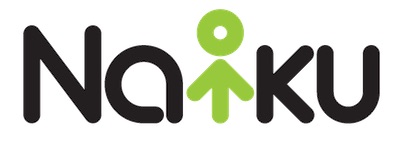
Seth Wagner is a former elementary school teacher with specialization in science education. Seth has a passion for education and for helping students (and now also teachers). In his current role, Seth helps educators across the country improve their classroom assessment practice through Naiku. He helps them incorporate learner-centric assessment techniques to build student confidence, student expectations, and accelerate student achievement. You can follow him on Twitter at @sethw06.
Welcome to my inaugural post of Naiku’s Coach’s Corner. In this bi-weekly blog, I’ll share my thoughts on educational assessment practices and stories from my work helping teachers across the country improve student achievement through learner-centric assessment practices.
This week, I want to discuss the importance of incorporating pre-assessment into your classroom assessment practice. Pre-assessment, sometimes referred to as diagnostic assessments, assesses a student’s strengths, weakness, knowledge, and skills prior to instruction. If used correctly, pre-assessments can be a great tool to help us identify the needs of our students. Below, I share four ways in which we can use a pre-test to help maximize our students’ potential.
1. Pre-assessments allows us to see if what is being covered in the lesson or unit is already mastered. If all of our students have a topic or skill mastered then we can skip that lesson. If only a couple of students have a problem, then we can individualize our instruction to bring them up to speed. If the majority of students are struggling with the information then we can continue with our lesson. This can be done quickly in one of two ways in Naiku. First, you can simply conduct a Quick Question session to poll your students. This will give you a quick and informal way to check for understanding before you start the lesson. Second, you can prepare a longer pre-test for your students. On your pre-test, be sure that each question is aligned to a standard or learning target. It’s best practice to have at least 6 questions per learning target on your pre-test.
2. Pre-assessments help measure true learning. By comparing pre-assessments and summative assessments, we are able to see what our students actually learned from the lessons that we developed. Now that we have given a pre-assessment, after we’ve given the summative assessment at the end of the unit, we can compare the scores to get an measure of student growth.
3. Pre-assessments give our students a preview of what will be expected of them. Setting clear expectations helps students begin to focus on the key topics that will be covered throughout the lesson. This also gives our students the opportunity to set educational goals for the coming weeks.
4. Pre-assessments provide ideas for future lessons. After a pre-test is given, we may find knowledge gaps that we did not expect. With this information, we can make changes to future lessons or even create new lessons to include further instruction and review.
I have created a pre-assessment covering “The Water Cycle” for grade 8 science. This assessment covers one standard, thus, I have 6 pre-assessment questions aligned to that standard from Minnesota (my home state where I taught). As mentioned above, it is good practice to have 6 questions per standard or learning target so that you get a more accurate and reliable estimate of the students’ prior knowledge. If you are already logged into your Naiku account you can find this pre-assessment here. You can also search for this assessment by clicking “Search” from your assessments page. In the “Assessment Name” box, enter ‘The water cycle pre-assessment” and click search.
I hope you found the information useful and find ways to incorporate pre-assessments into your classroom. Next time, I’ll discuss the importance of formative assessments and suggest ways to incorporate this critical assessment technique with Naiku. If you have suggestions for future topics that you would like to see me discuss, please send me a note at sethw@naiku.net.

